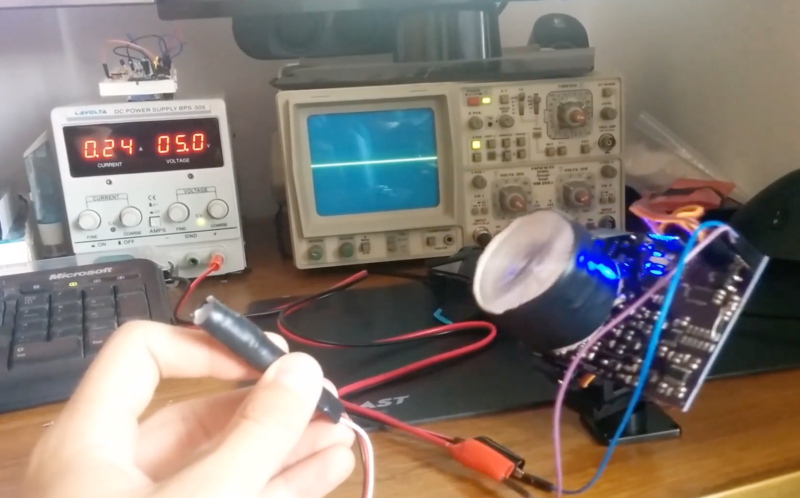Sometimes, a person has a reason to track a target. A popular way to do this these days is with a camera, a computer, and software to analyze the video. But, that lends itself more to automated systems, like sentries. What if you want to be able to target something by “painting” it with a laser?
That’s exactly what [Jeremy Leaf] wanted to do, and the results are pretty impressive. He was able to track a .06 milliwatt laser at 2 meters. His design does this using three photodiodes in order to determine the position of a laser spot using triangulation.
Once the location of the laser spot has been determined, it can either simply be reported or it can be tracked. Tracking is achieved with a gimbal setup which updates quickly and accurately. Of course, it can only track the laser if the laser has something to be projected upon. If you need to track something in open 3D space, there are alternatives that would be better suited to the task.















Very cool I like it.
Good job…
Thanks very much! :)
That circuit board looks complicated. I would like to see the schematic
You can do the same with an imaging system fitted with a spinning FM reticle and a single detector:
https://books.google.ch/books?id=rcrGlrguj1YC&pg=PA2434&lpg=PA2434&dq=parameters+of+spinning+fm+reticles&source=bl&ots=mJUN0-_ac_&sig=sWEaPkn8xK5fnPgF89SbGNjnCoE&hl=en&sa=X&ved=0ahUKEwiQiPCR0MrOAhWHvBQKHcTJDiYQ6AEIPzAH#v=onepage&q=parameters%20of%20spinning%20fm%20reticles&f=false
Unfortunately, I can’t find a more suitable article that’s not behind a paywall..
Anyways, this tech was (and maybe still is) used for IR tracking in defense systems. It’s really amazing what can be done without computers..
Here are a few additional resources if anyone is interested in reading further. These are more focused on multi-photon microscopy, but the principle is still (mostly) the same.
http://projects-web.engr.colostate.edu/ece-sr-design/AY13/SPIFI/SPatIal%20Image%20Frequency%20modulation%20for%20Imagingfinal12.pdf
http://arxiv.org/abs/1508.03541
Here’s an additional publication, if anyone is interested in reading further. This is more focused on multi-photon microscopy, but the principle is (mostly) still the same:
http://arxiv.org/abs/1508.03541
This can be done with a Wiimote IR camera module and an Attiny, AFAIK.
im thinking something like the sensor used on optical mice.its essentially a low res camera, slap on the right kind of optics, an ir filter, and even the lowly avr should be able to handle the image processing.
Yep, that is exactly what I pointed out as an alternative to the fancy set-up the guy was using in the dot painting drone story recently.
It can, but not to the same sensitivity. An important problem is background light saturation. Even a low level of sunlight can lead to a CCD sensor becoming saturated if optics are used, even with an IR filter. With a photodiode, there are things you can do to work around that limitation.
So, robot cat?
:-D
^5 …. I was gonna say that LOL
Simone Gertz needs to get on this, ASAP. Maybe it could have a little ammonia reservoir that could spray randomly on furniture throughout the night and a touch sensor that activates an X-acto blade on a servo when you touch it.
I think the significant point with this project is the ability to discern the location of single spot of very low power reflected IR.
The wii system is tracking light emitters of a significantly higher output and significantly spatially separated.
This is exactly correct. I’ve updated the site with a few extra details on how I get the necessary sensitivity.
Nice. Very impressive!
Abducted by the CIA in 3,2,1…
Neat, but the optic description confuses me.